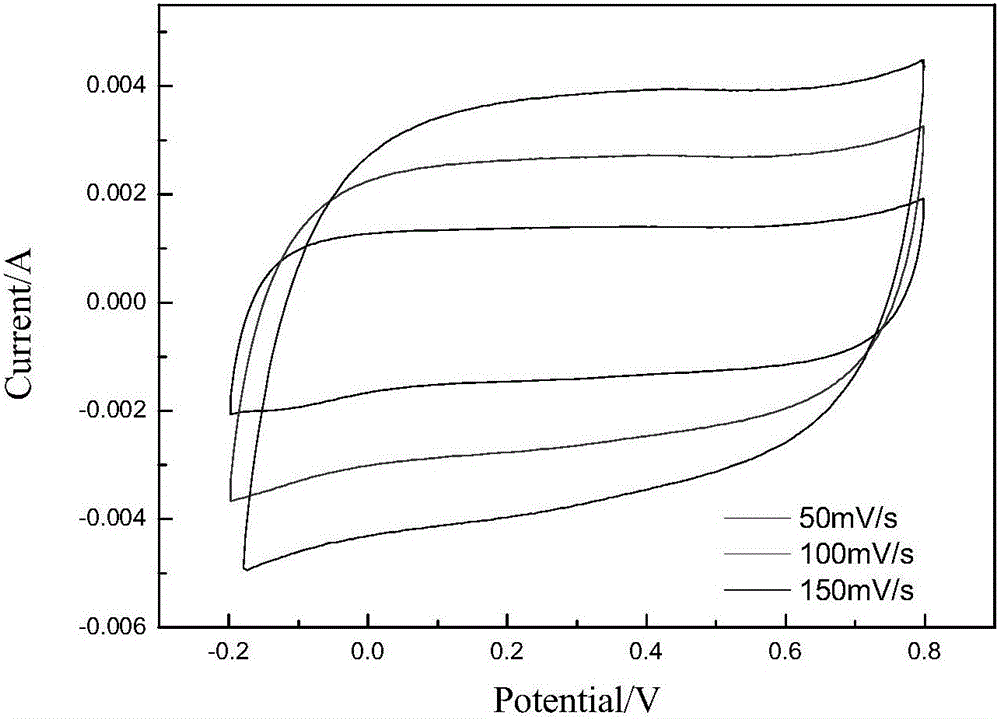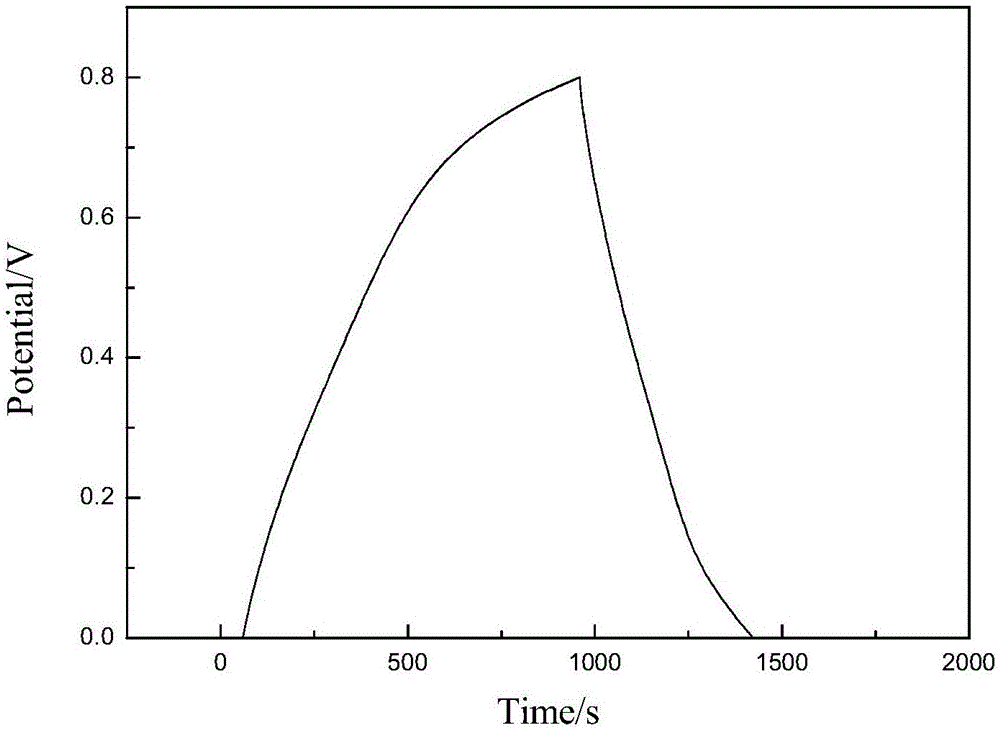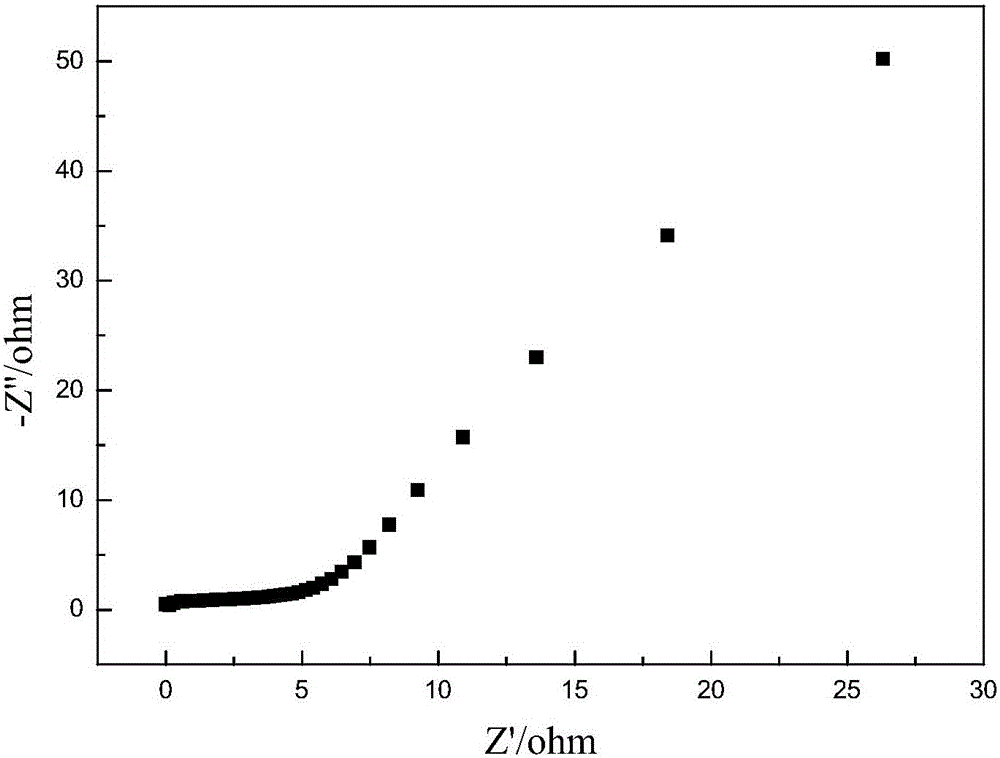Method for preparing microbial fuel cell anode electrodes from agricultural wastes
A technology of agricultural waste and fuel cells, which is applied in the direction of battery electrodes, circuits, electrical components, etc., can solve the problems that the specific surface area is difficult to further increase and the steps are complicated, and achieve strong functionality, high raw material utilization, and high specific surface area. Effect
- Summary
- Abstract
- Description
- Claims
- Application Information
AI Technical Summary
Problems solved by technology
Method used
Image
Examples
Embodiment 1
[0040] Dry the sample, and react for 30 minutes in a nitrogen atmosphere with a heating rate of 10°C / min and 400°C, and control the nitrogen flow rate at 600Ml / min to carbonize the sample, then take it out and grind it to 60 mesh, and soak it in 5wt% HCl for 6h , wash to neutral. Soak in 3wt% HF for 6h, wash until neutral, and dry; mix and grind the sample with KOH to 100 mesh, move it to a nickel crucible, and set the activation conditions as follows: temperature setting 700°C, temperature 1h, ratio 1:4, the obtained activated porous carbon material is marked as D-700-4-1.
Embodiment 2
[0042] Dry the sample, and react for 30 minutes in a nitrogen atmosphere with a heating rate of 10°C / min and 400°C, and control the nitrogen flow rate at 600Ml / min to carbonize the sample, then take it out and grind it to 60 mesh, and soak it in 5wt% HCl for 6h , wash to neutral. Soak in 3wt% HF for 6h, wash until neutral, and dry; mix and grind the sample with KOH to 100 mesh, move to a nickel crucible, and set the activation conditions as follows: temperature setting 800°C, temperature 1h, ratio 1:2, the activated porous carbon material was obtained, marked as D-800-2-1.
Embodiment 3
[0044] Dry the sample, and react for 30 minutes in a nitrogen atmosphere with a heating rate of 10°C / min and 400°C, and control the nitrogen flow rate at 600Ml / min to carbonize the sample, then take it out and grind it to 60 mesh, and soak it in 5wt% HCl for 6h , wash to neutral. Soak in 3wt% HF for 6h, wash until neutral, and dry. Mix and grind the sample with KOH to 100 mesh, move it to a nickel crucible, and set the activation conditions as follows: temperature setting 800°C, temperature 1h, ratio 1:3, and the activated porous carbon material is obtained, marked as D -800-3-1.
PUM
 Login to View More
Login to View More Abstract
Description
Claims
Application Information
 Login to View More
Login to View More - R&D
- Intellectual Property
- Life Sciences
- Materials
- Tech Scout
- Unparalleled Data Quality
- Higher Quality Content
- 60% Fewer Hallucinations
Browse by: Latest US Patents, China's latest patents, Technical Efficacy Thesaurus, Application Domain, Technology Topic, Popular Technical Reports.
© 2025 PatSnap. All rights reserved.Legal|Privacy policy|Modern Slavery Act Transparency Statement|Sitemap|About US| Contact US: help@patsnap.com



